4 easy, expert-approved ways to remove mold from the rubber seal on your washing machine
Banish mold from washing machine rubber with these easy methods
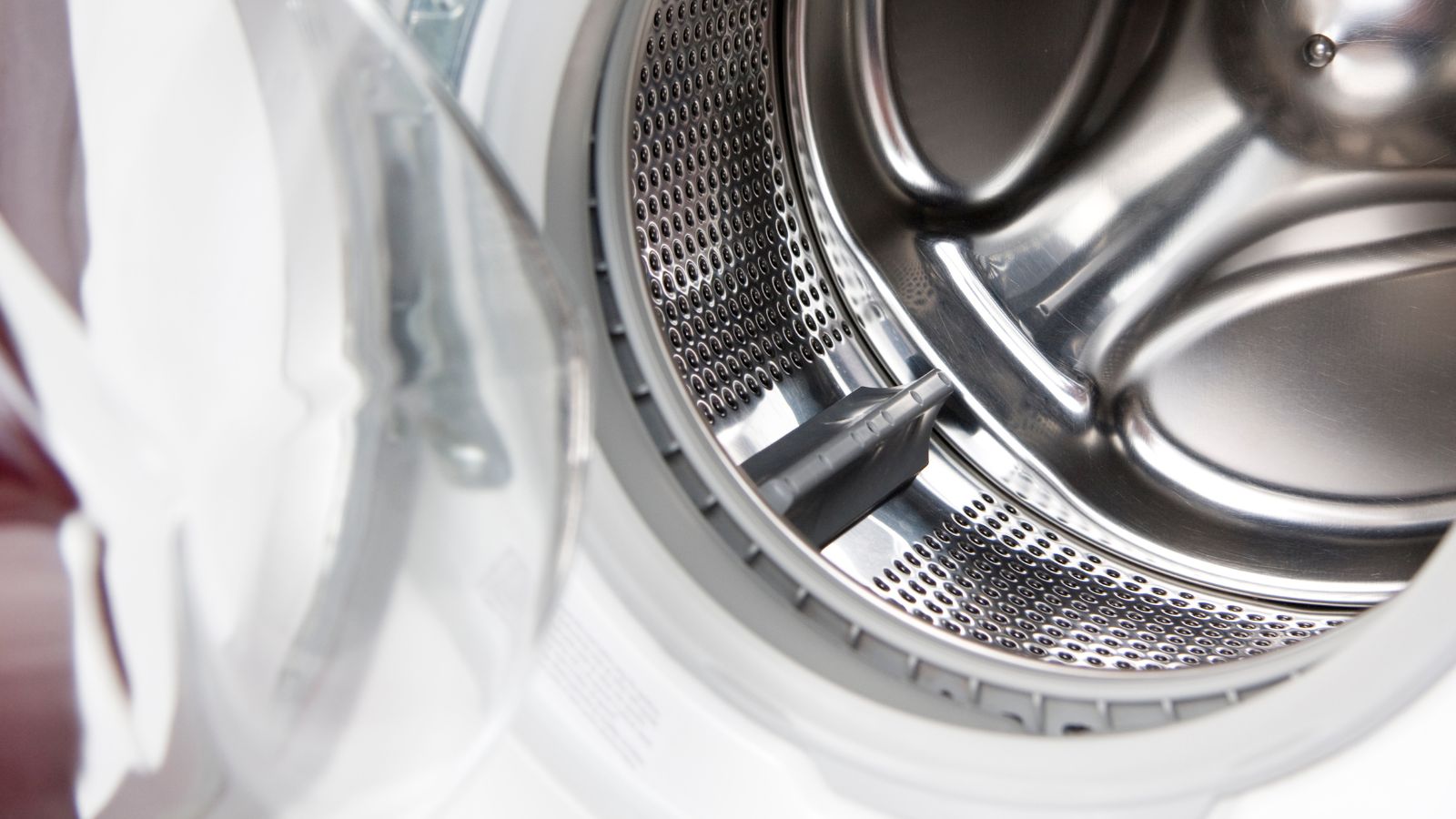
- 1. Mildew remover
- 2. White vinegar
- 3. Run a sanitizing cycle
- 4. Baking soda
- What causes mold in a washing machine?
- Preventing mold on a washing machine seal
- 1. Mildew remover
- 2. White vinegar
- 3. Run a sanitizing cycle
- 4. Baking soda
- What causes mold in a washing machine?
- Preventing mold on a washing machine seal

Gabriella Dyson
Mold is inevitable in a washing machine. Given its constant exposure to warm water and detergent, it is the perfect environment for black mold to linger and grow – especially on rubber seals.
Mold isn't just unsightly. It can lead to dirtier clothes and musty odors that make laundry an even more taxing chore, professional cleaners warn.
So how do you remove mold from the rubber seal on a washing machine? Experts suggest one of these four cleaning tips is the way to go.
How to remove mold from the rubber seal on a washing machine
Before you start cleaning a washing machine, you will need to gather the essential supplies for getting rid of black mold.
- Cleaning gloves, from Walmart, to protect your skin
- A cleaning agent: Either:
mildew remover, like Zep from Walmart,
white vinegar, from Walmart,
baking soda, from Walmart,
or washing machine cleaner, such as OxiClean from Walmart. - Microfiber cloths
- A soft scrubbing brush, available at Amazon
It is also important to ensure good ventilation to avoid cleaning agents or mold spores irritating or damaging your airways. With the tools acquired, you can start cleaning.
1. Use a specialized mildew remover

One of the best ways to remove mold and dark stains from your washing machine gasket is to use a commercial mildew remover, such as Star Brite from Walmart – especially if the stains are old and need a powerful cleaner to help lighten them, advises Ron Shimek, appliance expert at Mr. Appliance.
It's best to wear gloves to protect your skin and spray the solution directly onto the seal, Ron says. Then, use a clean rag or soft-bristled brush to work it into the stains, making sure to target the inside of the seal as well.
2. Go natural with a vinegar solution
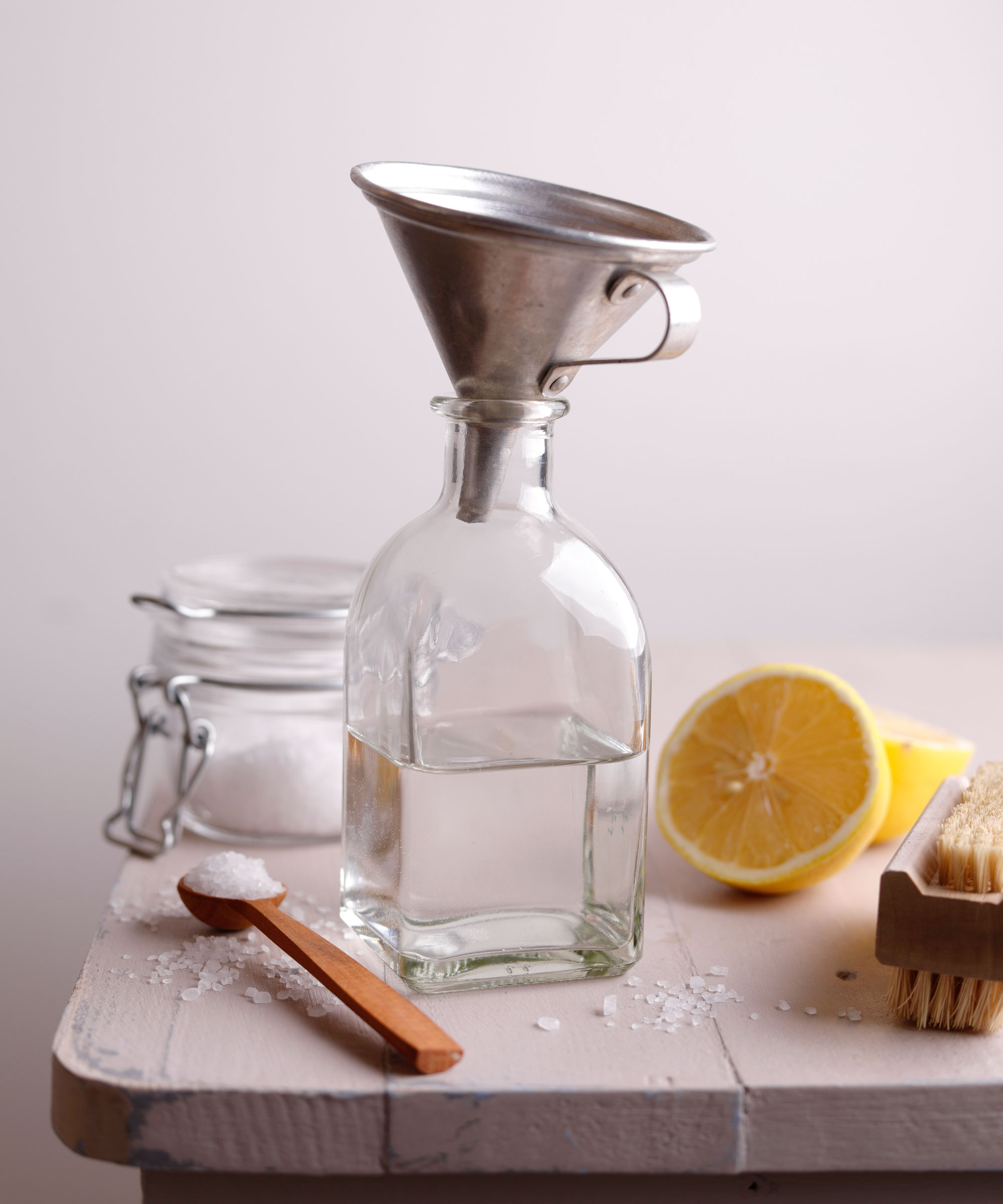
Using vinegar to kill mold is one of the best ways to target black spores and build-up, and is actually better than using bleach to get rid of mold, both in terms of effectiveness and protecting the environment.
Tamara Nunes, professional cleaner and owner of Neat Nelly Cleaning Services, says, ‘I mix equal parts warm distilled water and white vinegar in a spray bottle to apply liberally to the seals and drum. I then scrub with a clean cloth or soft-bristled brush, leave it to sit for 15 minutes or so, then wipe and dry with a clean towel.’
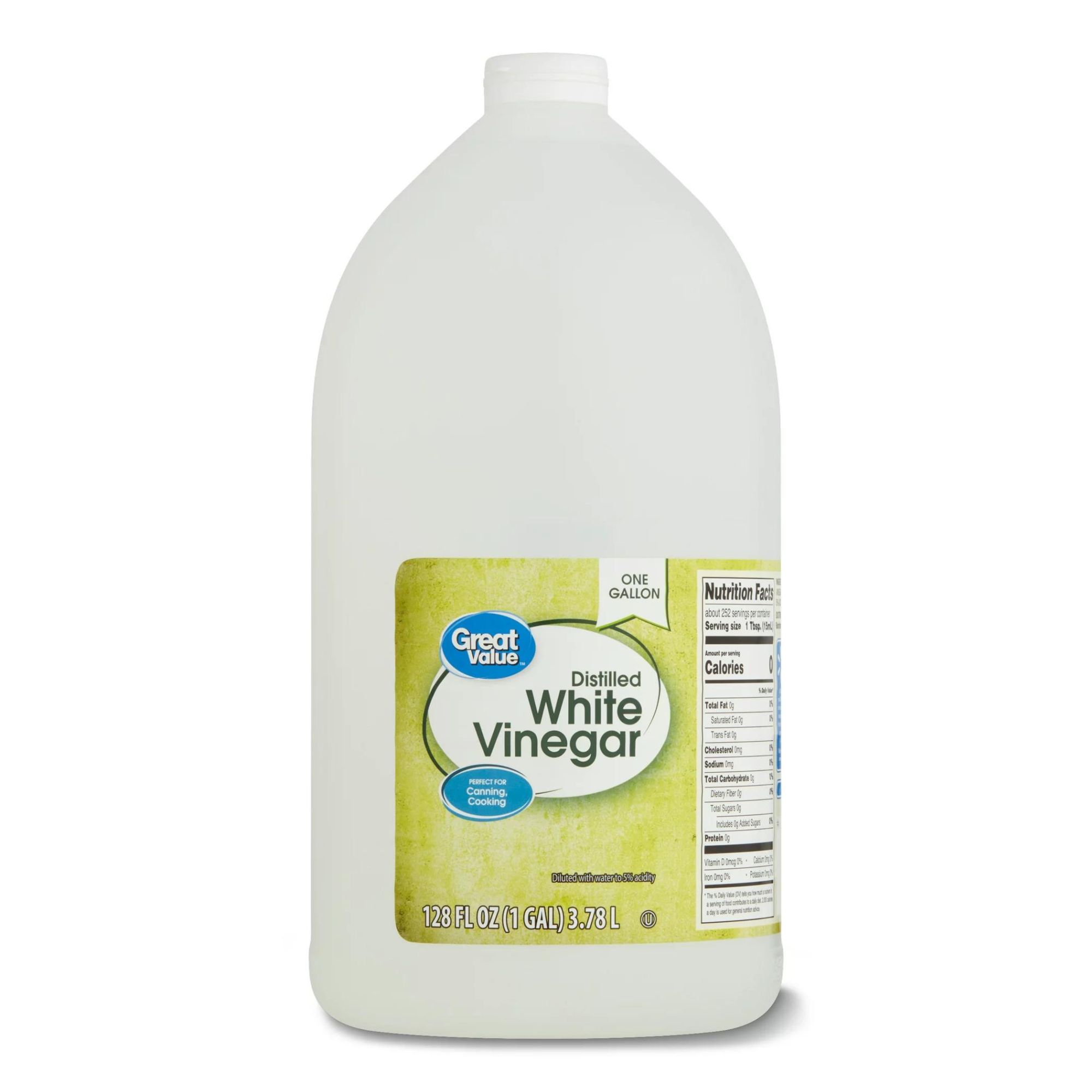
Cleaning with vinegar is one of the best natural cleaning methods for around the home. From getting rid of mold to busting musty odors, there is very little it cannot do. We always keep a large container under our sinks.
3. Run a sanitizing cycle on your washing machine
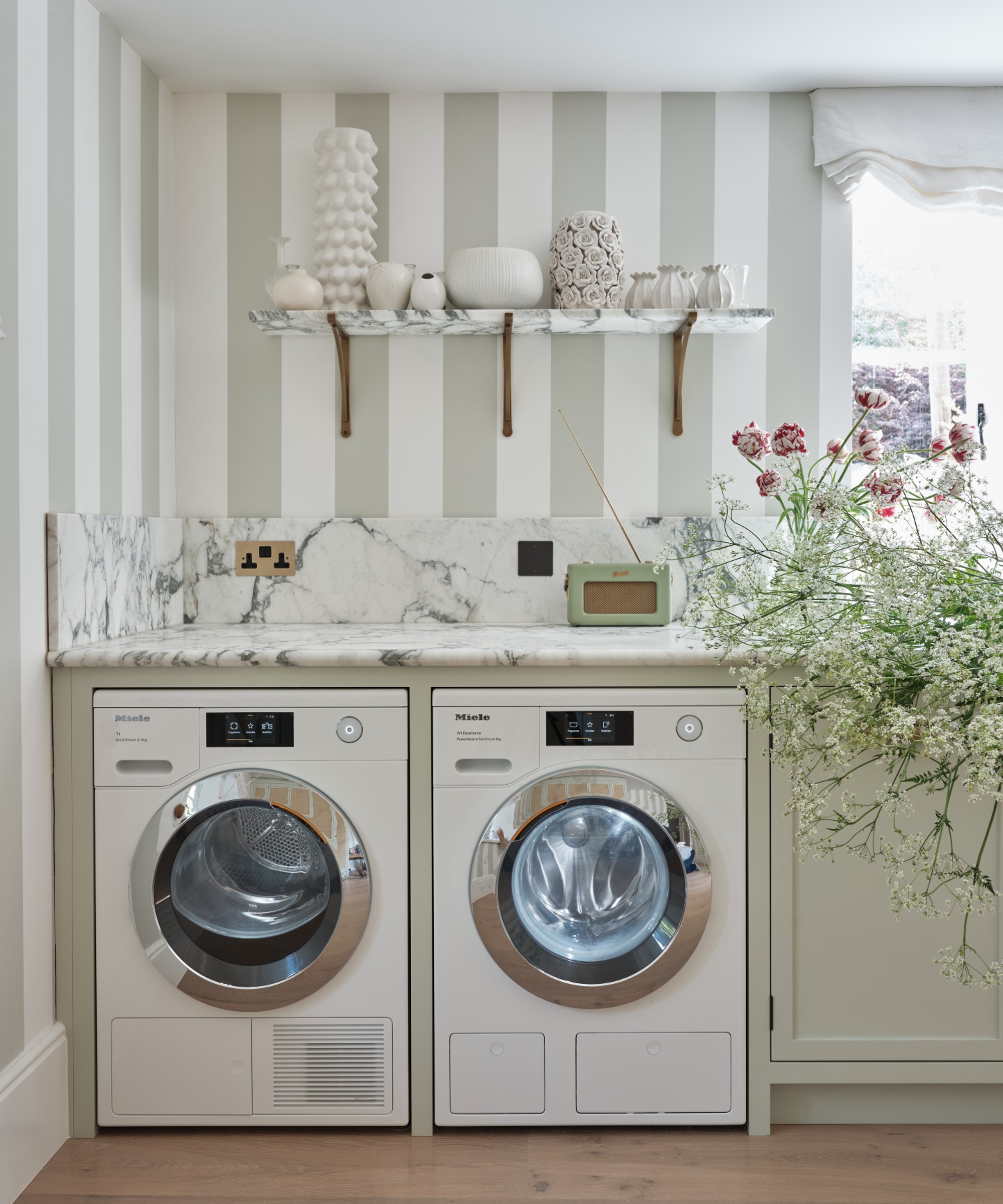
If you don’t fancy scrubbing or want to make sure that any mold within the machine and drum is removed too, run a ‘sanitizing’ cycle from your washing machine's wash settings.
Appliance expert Ron Shimek explains that this is not a setting on the washer itself, but a hot wash at the highest temperature on your machine. 'Just make sure to run this cycle without any clothes in it to prevent damaging them,' he adds.
If you want an added cleaning boost, consider using a washing machine cleaner agent in the cycle too. I love Dr Beckmann's Washing Machine Cleaner from Walmart for a thorough deep clean of my machine and all its internal components. Alternatively, if you prefer green cleaning, consider making DIY washing machine cleaner with vinegar.
4. Use a baking soda paste to tackle stains
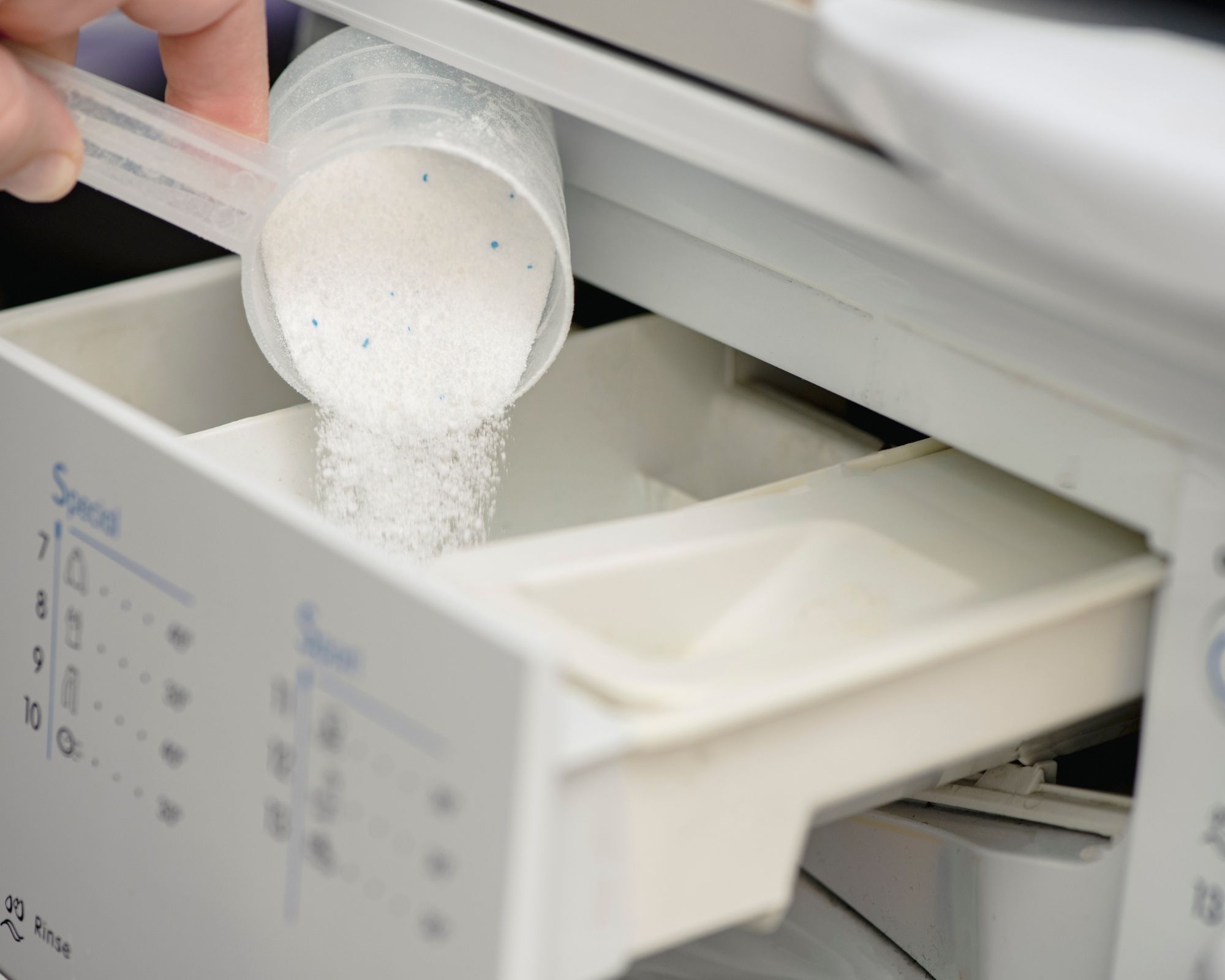
Baking soda is a natural lightening agent, so is ideal for lifting stains after you have used another product to remove mold spores, says Michael Golubev, mold removal expert and CEO of Mold Busters.
To clean with baking soda, Michael mixes equal parts water and baking soda and applies the paste directly to the affected area. ‘Allow it to sit for 10-15 minutes before scrubbing gently with a soft brush,’ he recommends. ‘Finish by rinsing with water and dry with a clean cloth.’
Using baking soda is also a great way to clean a washing machine that smells, as it doubles as a deodorizer. When letting the baking soda paste sit on the seals, sprinkle some loose powder into the drum and allow it to rest for up to an hour to absorb musty odors.
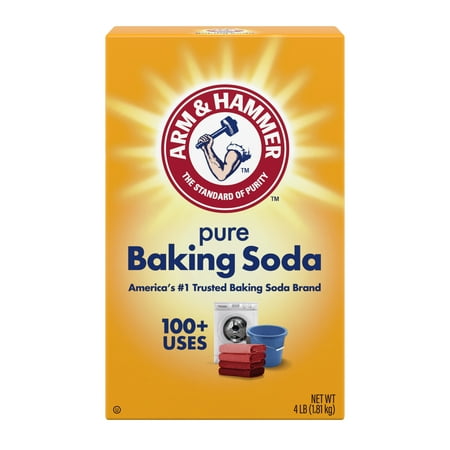
Baking soda can be used in all sorts of cleaning tasks around the home. This 4lb box will get plenty of use in all rooms.
FAQs
What causes mold in a washing machine?
One of the best ways to prevent mold in a washing machine is to work out what is causing it. Mold on washing machine seals can be caused by any number of things, such as leaving the seal wet for too long, not ventilating the machine, using too much detergent or fabric softener, washing at low temperatures that do not effectively kill mold, and small bits of lint or crumbs getting stuck in your machine after washing clothes.
These causes can easily be counteracted with frequent cleaning, however, making it easy to have a mold-free machine.
Can you prevent mold on a washing machine seal?
Prevention is always better than cure, and it is relatively simple to keep your machine mold-free. Simply ensure the machine dries out thoroughly between uses, says Tamara Nunes, professional cleaner.
Tamara suggests wiping down the seals and drying them with a dry towel after you have used the machine, or leaving your washing machine door open between washes to allow it to air dry. This process can be sped up if you have a dehumidifier. Leaving your washing machine detergent drawer open or wiping it down will also help to prevent mold growth in this compartment, too.
It is also a good idea to regularly clean your washing machine to stay on top of mold. Deep cleaning once a month should be more than enough.
Cleaning a washing machine and removing mold from rubber seals is one of the easiest ways to make laundry smell better and ensure your clothes always come out looking their best. Done regularly enough, it will be a quick and easy task to help keep your home clean.
Mold is inevitable in a washing machine. Given its constant exposure to warm water and detergent, it is the perfect environment for black mold to linger and grow – especially on rubber seals.
Mold isn't just unsightly. It can lead to dirtier clothes and musty odors that make laundry an even more taxing chore, professional cleaners warn.
So how do you remove mold from the rubber seal on a washing machine? Experts suggest one of these four cleaning tips is the way to go.
How to remove mold from the rubber seal on a washing machine
Before you start cleaning a washing machine, you will need to gather the essential supplies for getting rid of black mold.
- Cleaning gloves, from Walmart, to protect your skin
- A cleaning agent: Either:
mildew remover, like Zep from Walmart,
white vinegar, from Walmart,
baking soda, from Walmart,
or washing machine cleaner, such as OxiClean from Walmart. - Microfiber cloths
- A soft scrubbing brush, available at Amazon
It is also important to ensure good ventilation to avoid cleaning agents or mold spores irritating or damaging your airways. With the tools acquired, you can start cleaning.
1. Use a specialized mildew remover

One of the best ways to remove mold and dark stains from your washing machine gasket is to use a commercial mildew remover, such as Star Brite from Walmart – especially if the stains are old and need a powerful cleaner to help lighten them, advises Ron Shimek, appliance expert at Mr. Appliance.
It's best to wear gloves to protect your skin and spray the solution directly onto the seal, Ron says. Then, use a clean rag or soft-bristled brush to work it into the stains, making sure to target the inside of the seal as well.
2. Go natural with a vinegar solution

Using vinegar to kill mold is one of the best ways to target black spores and build-up, and is actually better than using bleach to get rid of mold, both in terms of effectiveness and protecting the environment.
Tamara Nunes, professional cleaner and owner of Neat Nelly Cleaning Services, says, ‘I mix equal parts warm distilled water and white vinegar in a spray bottle to apply liberally to the seals and drum. I then scrub with a clean cloth or soft-bristled brush, leave it to sit for 15 minutes or so, then wipe and dry with a clean towel.’

Cleaning with vinegar is one of the best natural cleaning methods for around the home. From getting rid of mold to busting musty odors, there is very little it cannot do. We always keep a large container under our sinks.
3. Run a sanitizing cycle on your washing machine

If you don’t fancy scrubbing or want to make sure that any mold within the machine and drum is removed too, run a ‘sanitizing’ cycle from your washing machine's wash settings.
Appliance expert Ron Shimek explains that this is not a setting on the washer itself, but a hot wash at the highest temperature on your machine. 'Just make sure to run this cycle without any clothes in it to prevent damaging them,' he adds.
If you want an added cleaning boost, consider using a washing machine cleaner agent in the cycle too. I love Dr Beckmann's Washing Machine Cleaner from Walmart for a thorough deep clean of my machine and all its internal components. Alternatively, if you prefer green cleaning, consider making DIY washing machine cleaner with vinegar.
4. Use a baking soda paste to tackle stains

Baking soda is a natural lightening agent, so is ideal for lifting stains after you have used another product to remove mold spores, says Michael Golubev, mold removal expert and CEO of Mold Busters.
To clean with baking soda, Michael mixes equal parts water and baking soda and applies the paste directly to the affected area. ‘Allow it to sit for 10-15 minutes before scrubbing gently with a soft brush,’ he recommends. ‘Finish by rinsing with water and dry with a clean cloth.’
Using baking soda is also a great way to clean a washing machine that smells, as it doubles as a deodorizer. When letting the baking soda paste sit on the seals, sprinkle some loose powder into the drum and allow it to rest for up to an hour to absorb musty odors.

Baking soda can be used in all sorts of cleaning tasks around the home. This 4lb box will get plenty of use in all rooms.
FAQs
What causes mold in a washing machine?
One of the best ways to prevent mold in a washing machine is to work out what is causing it. Mold on washing machine seals can be caused by any number of things, such as leaving the seal wet for too long, not ventilating the machine, using too much detergent or fabric softener, washing at low temperatures that do not effectively kill mold, and small bits of lint or crumbs getting stuck in your machine after washing clothes.
These causes can easily be counteracted with frequent cleaning, however, making it easy to have a mold-free machine.
Can you prevent mold on a washing machine seal?
Prevention is always better than cure, and it is relatively simple to keep your machine mold-free. Simply ensure the machine dries out thoroughly between uses, says Tamara Nunes, professional cleaner.
Tamara suggests wiping down the seals and drying them with a dry towel after you have used the machine, or leaving your washing machine door open between washes to allow it to air dry. This process can be sped up if you have a dehumidifier. Leaving your washing machine detergent drawer open or wiping it down will also help to prevent mold growth in this compartment, too.
It is also a good idea to regularly clean your washing machine to stay on top of mold. Deep cleaning once a month should be more than enough.
Cleaning a washing machine and removing mold from rubber seals is one of the easiest ways to make laundry smell better and ensure your clothes always come out looking their best. Done regularly enough, it will be a quick and easy task to help keep your home clean.
Sign up to the Homes & Gardens newsletter
Design expertise in your inbox – from inspiring decorating ideas and beautiful celebrity homes to practical gardening advice and shopping round-ups.

Chiana has been at Homes & Gardens for two years and is our resident 'queen' of non-toxic living. She spends most of her time producing content for the Solved section of the website, helping readers get the most out of their homes through clever decluttering, cleaning, and tidying tips. She was named one of Fixr's top home improvement journalists in 2024.
- Gabriella DysonContributor
-
 5 surprising but brilliant ways to clean with old socks – from perfectly buffing stainless steel to deterring pests naturally and more
5 surprising but brilliant ways to clean with old socks – from perfectly buffing stainless steel to deterring pests naturally and moreTackle dust in tricky corners, clean your mirrors and even banish bad odors with those rogue single socks
By Andy van Terheyden Published
-
 How to grow astilbe – expert advice on cultivating this shade-tolerant flowering perennial
How to grow astilbe – expert advice on cultivating this shade-tolerant flowering perennialShade-tolerant and pest-resistant - astilbe are hardy and tough perennials that can thrive in many settings
By Ellen Wells Published
-
 5 surprising but brilliant ways to clean with old socks – from perfectly buffing stainless steel to deterring pests naturally and more
5 surprising but brilliant ways to clean with old socks – from perfectly buffing stainless steel to deterring pests naturally and moreTackle dust in tricky corners, clean your mirrors and even banish bad odors with those rogue single socks
By Andy van Terheyden Published
-
 5 things people with clean upholstery always do – simple, quick and oh-so-effective
5 things people with clean upholstery always do – simple, quick and oh-so-effectiveEnsure your furnishing looks clean year-round with these expert tips
By Seraphina Di Mizzurati Published
-
 'Wick away the ick' – 6 things people with clean laundry rooms always do to make this hardworking space shine
'Wick away the ick' – 6 things people with clean laundry rooms always do to make this hardworking space shineThese tips on how to clean your laundry room will banish grime
By Seraphina Di Mizzurati Published
-
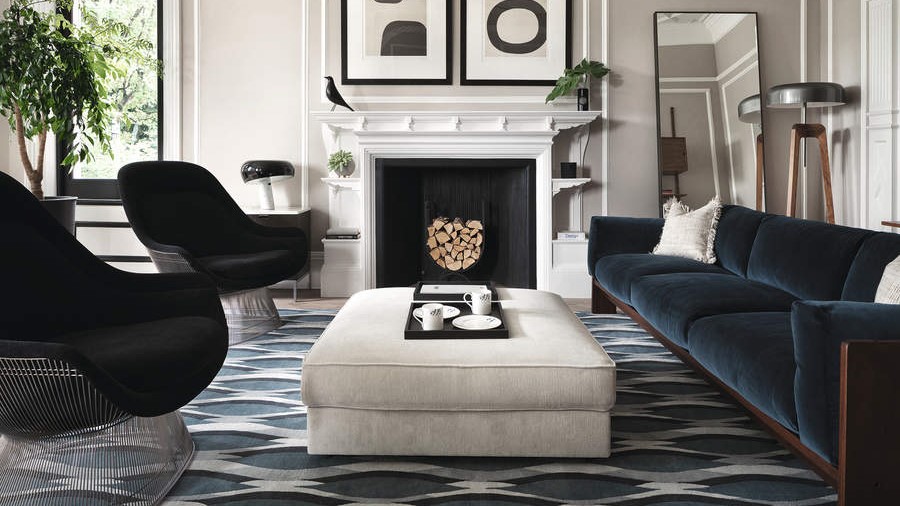 How safe are carpet deodorizers? As a seasoned vacuum tester, I urge you to try alternative methods
How safe are carpet deodorizers? As a seasoned vacuum tester, I urge you to try alternative methodsNatural cleaning is always the answer
By Dan Fauzi Published
-
 'The world will not end' – 5 cleaning habits to quit for a happier, easier life, and what to do instead
'The world will not end' – 5 cleaning habits to quit for a happier, easier life, and what to do insteadGet your home sparkling, minus the stress
By Ciéra Cree Published
-
 9 things you can clean with glycerin – this cheap and natural cleaner is perfect for indoor and outdoor use
9 things you can clean with glycerin – this cheap and natural cleaner is perfect for indoor and outdoor useFrom patio furniture to silverware, this hydrating and gentle cleaning agent will work miracles
By Ciéra Cree Published
-
 How to clean a terrazzo floor in 5 steps – expert tips to scrub, shine, and seal this sparkling floor finish
How to clean a terrazzo floor in 5 steps – expert tips to scrub, shine, and seal this sparkling floor finishAvoid damage and protect it's shine with these expert tricks
By Chiana Dickson Published
-
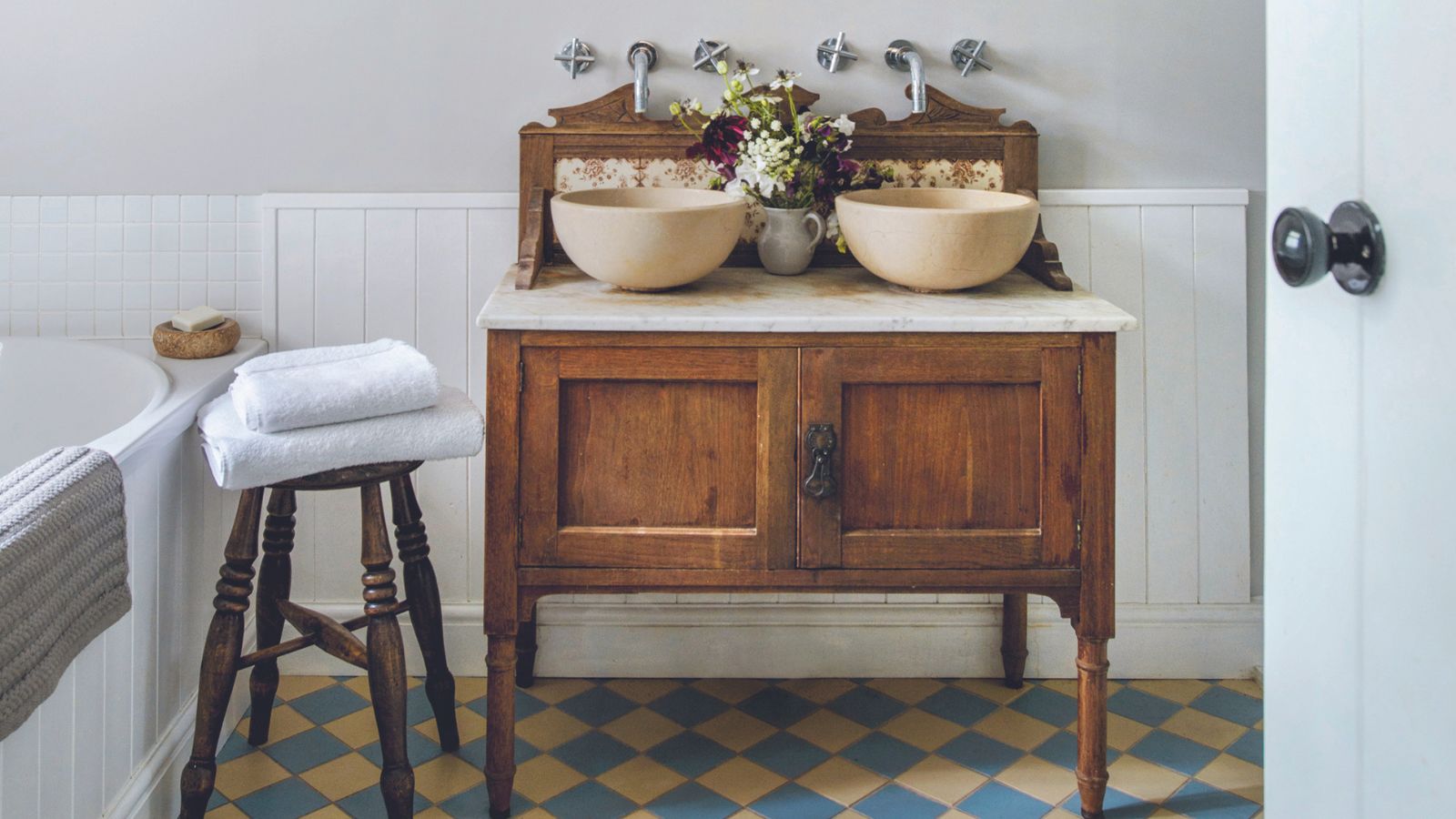 I'm 5ft2 and this telescopic scrubber safely and easily banished mold and grime in even the hardest-to-reach areas of my bathroom in less than 15 minutes
I'm 5ft2 and this telescopic scrubber safely and easily banished mold and grime in even the hardest-to-reach areas of my bathroom in less than 15 minutesMy bathroom has never looked better thanks to this handy $16 two-in-one tool from Joseph Joseph
By Ottilie Blackhall Published